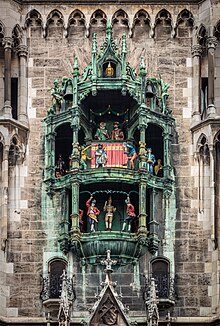
Munich is the capital and most populous city of the Free State of Bavaria. With a population of 1,578,132 inhabitants as of 31 May 2022, it is the third-largest city in Germany, after Berlin and Hamburg, and thus the largest which does not constitute its own state, as well as the 11th-largest city in the European Union. The city's metropolitan region is home to about six million people and the third biggest Metropolitan Region by GDP in the European Union.

Alsace–Lorraine is a historical region and a former territory of the German Empire, located in modern day France. It was established in 1871 by the German Empire after it had won the region from France in the Franco-Prussian War with the Treaty of Frankfurt and forced France to pay an indemnity of five billion francs. Anger in the French Third Republic about the loss of the territory was one of the contributing factors that led to World War I. Alsace-Lorraine was reoccupied by France in 1920 as part of the Treaty of Versailles following Germany's defeat in the war, although it was annexed by France in 1918.

The Ludwig Maximilian University of Munich is a public research university in Munich, Germany. Originally established as the University of Ingolstadt in 1472 by Duke Ludwig IX of Bavaria-Landshut, it is Germany's sixth-oldest university in continuous operation.
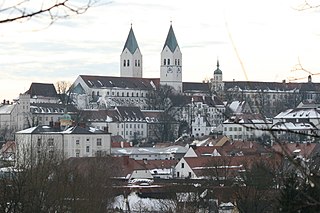
Freising is a university town in Bavaria, Germany, and the capital of the Freising Landkreis (district), with a population of about 50,000.

The Hofbräuhaus am Platzl is a beer hall in Munich, Bavaria, Germany, originally built in 1589 by Bavarian Duke Maximilian I as an extension of the Staatliches Hofbräuhaus in München brewery. The general public was admitted in 1828 by Ludwig I. The building was completely remodeled in 1897 by Max Littmann when the brewery moved to the suburbs. All of the rooms except the historic beer hall ("Schwemme") were destroyed in the World War II bombings. The reopening of the Festival Hall in 1958 marked the end of the post-war restoration work.

Marienplatz is a central square in the city centre of Munich, Germany. It has been the city's main square since 1158.
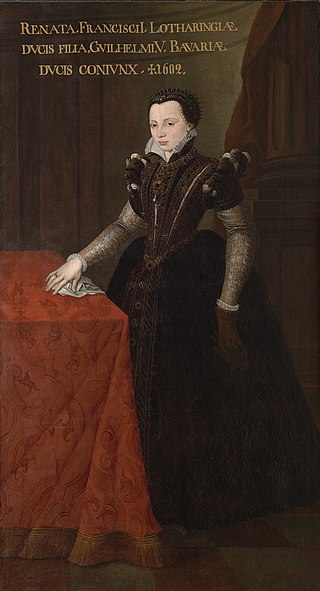
Renata of Lorraine was a French noblewoman of the House of Lorraine who became a Duchess of Bavaria by her marriage to Duke William V.

The New Town Hall is a town hall forms the northern part of Marienplatz in Munich, Bavaria, Germany. It hosts the city government including the city council, offices of the mayors and a small portion of the administration. In 1874 the municipality had left the Old Town Hall for its new domicile.

This article gives an overview about the architecture of Munich, Germany.
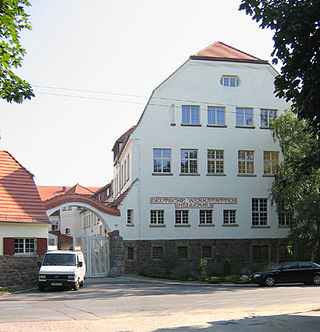
Richard Riemerschmid was a German architect, painter, designer and city planner from Munich. He was a major figure in Jugendstil, the German form of Art Nouveau, and a founder of architecture in the style. A founder member of both the Vereinigte Werkstätte für Kunst im Handwerk and the Deutscher Werkbund and the director of art and design institutions in Munich and Cologne, he prized craftsmanship but also pioneered machine production of artistically designed objects.

Münchner Volkstheater, or Munich People’s Theater, is a company based in the Bavarian capital and operated by the cultural office of the city government. Its original performing home opened in 1903. This was rebuilt in 1955, in 1983 and finally in 2021. It now can hold over 800 spectators. Since 2002, Christian Stückl has served as the company’s Intendant.
The following is a timeline of the history of the city of Munich, Germany.

The Munich International Film Festival is the largest summer film festival in Germany and second only in size and importance to the Berlinale. It has been held annually since 1983 and takes place in late-June/early-July. The latest festival was held from June 23 to July 2, 2022. It presents feature films and feature-length documentaries. The festival is also proud of the role it plays in discovering talented and innovative young filmmakers. With the exception of retrospectives, tributes and homages, all of the films screened are German premieres and many are European and world premieres. There are a dozen competitions with prizes worth over €250,000 which are donated by the festival's major sponsors and partners.

Georg Wrba was a German sculptor and graphic artist. He created some 3,000–4,000 works, including as a collaborator of the Zwinger workshop.

The Old Technical Town Hall, is a communal service building of the city administration and headquarters of the section for the planning and building regulations of Munich, Bavaria, Germany. It is the oldest high-rise building in Munich and is still referred to as "Das Hochhaus" by old-established Munichers, although there are now more and higher high-rise buildings.
Heinrich Schlitt was a German painter and illustrator, known for his fantasy motifs that feature gnomes, dwarves, and faeries. He was one of the in-house artists at the Villeroy & Boch ceramic company in Mettlach, Saarland, and his designs for their beer steins remain popular with collectors to this day.

Kurfürstenplatz is a square in the Munich district of Schwabing and is located about two and a half kilometres north of the city centre. It is the intersection of several streets and tram lines and was built in 1915 and named after the Elector Maximilian II. Emanuel, born in Munich in 1662.
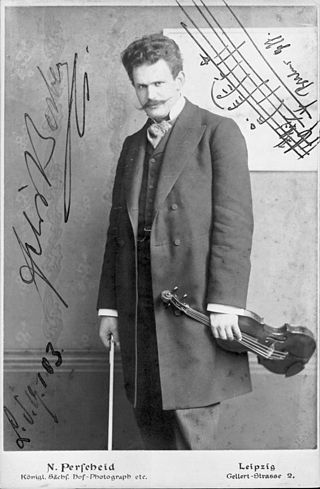
Karl Heinrich Felix Berber was a German violinist.
Anna Caspari was a German Jewish art dealer who was deported from Germany and murdered by the Nazis in Kaunas in 1941.
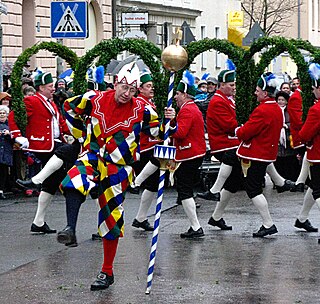
The Coopers' Dance is a guild dance of coopers originally started in Münich. Since early 1800s the custom spread via journeymen and it is now a common tradition over the Old Bavaria region. The dance was supposed to be held every seven years.
